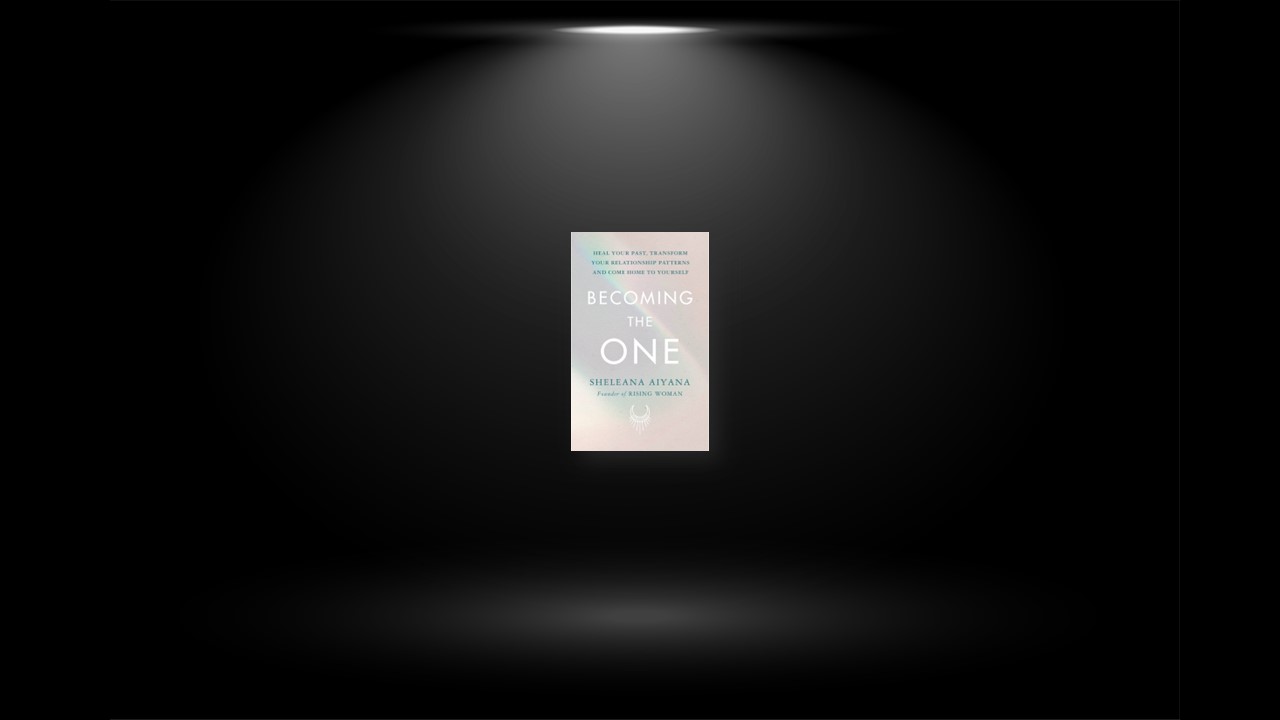A multibillion-dollar personal growth industry has sold us the idea that we need to change who we are to have what we want. We’ve been taught that attracting a partner requires disingenuous game-playing, and that we need to extract the “undesirable” qualities from our personality to be attractive. As a result, you may have felt torn between being yourself and being who you’ve been told to be by the outside world.
Becoming the One is a response to the idea that you need to change or fix who you are in order to be loved. This book is about self-acceptance, because even the parts of yourself that you think are hard to love deserve a seat at the table. This is an opportunity for you to leave all the rest at the door: the pushing, the striving, the perfectionism, the struggling to be anyone other than who you are.
I. Reclaim Your Relationship to Self
It Starts with You
Your relationship with yourself sets the foundation for all the relationships you have in your life.
The inner work requires that you return to yourself and take radical responsibility for your mind, your emotions, and your reality.
It’s okay if you feel a bit disconnected from your authentic self right now. Be gentle and practice compassion.
Rebuilding a relationship with yourself is a gradual process where you learn to witness your thoughts and reconnect to your body and emotions.
Choosing to heal your relationship patterns is not about fixing yourself; it’s about reclaiming your wholeness.
Coming Home to the Body’s Wisdom
Emotions are energy, and they come and go.
There are no “good” and “bad” feelings.
You don’t need to rush to change, fix, or solve your emotions.
Emotions don’t have to make sense to be valid.
Not every emotion requires a response or an action; sometimes a little patience is all that’s required.
When your head and your heart are aligned, it’s time to take action.
Learning to separate emotions, sensations, and thoughts builds confidence.
Self-soothing can be as simple as returning to your breath or feeling your feet on the ground.
Allowing space for your emotional reality connects you to your intuition and core values.
Nature is a beautiful teacher. Let the elements offer you wisdom and teach you about your inner emotional landscape.
Bathe yourself in self-compassion as you come home to your body. You left for a reason, so return with gentleness and understanding.
Connect with Your Inner Child
Your inner child is meant to be nurtured and integrated, not rejected or shunned.
A healthy connection with your inner child will help you be more authentic.
By healing your inner child, you are remembering your oneness with spirit and nature.
This work is about learning to listen to your inner child attentively, and then respond from your wise inner adult.
Your inner child is also home to your joy, creativity, and ability to celebrate life. Let yourself play, laugh, and have fun.
II. Heal Your Past
Healing the Abandonment Wound
Having an abandonment wound does not mean that you are broken.
Your abandonment wound points to the most vulnerable and tender parts of your inner child.
An abandonment wound can happen even if you had a loving family.
An abandonment wound can occur when your emotional needs weren’t met, even if your parents were physically present.
Healing your abandonment wound does not mean that you’ll forget about the past or stop desiring love, closeness, or reassurance. It means you will no longer be ruled by your pain.
While healing your abandonment wound, it’s important to practice being attuned to your body and naming your emotions.
No one else is responsible for healing this wound. Someone can give you all the love in the world, but you also have to do the work to let that love in.
When your abandonment wound is triggered, practice inner child work, self-soothing, asking for help, and being in connection with others.
Divine Mother and Father Energy
Acknowledging your mother–father wound is not about guilting or blaming your parent.
You do not need to share your process with your parent. This work is for your own healing and liberation.
Healing the mother–father wound is a slow, gradual process and requires that you feel your feelings and eventually find your way to acceptance and/or forgiveness.
Very few of us grew up with parents who engaged in inner work; thus, most parents do not have the language to have hard conversations with you.
Your parents are human beings with their own flaws, past traumas, and blocks. Their inability to show up for you in the way you needed is not a reflection of your worth.
You can experience healing, transformation, and even an improved relationship with your parents by shifting your relationship to them in your own heart and mind.
Mother and father energy can be found outside of your parents—in nature, and in yourself by learning how to self-nurture, take good care of your own heart, set boundaries, and honor your inner voice.
Tapping into divine mother and father energy is a beautiful way to connect to universal love and nature; remember that you are not alone.
You can do the letter ritual as many times as you need. Do not expect to do it once and feel complete.
Forgiveness and Acceptance
Forgiveness is for you, not for them.
Forgiveness can improve your physical well-being: better sleep, more energy, more openness in your body.
Forgiveness returns you to the seat of your power and provides internal freedom.
Forgiveness does not always mean reconciliation.
Sometimes forgiveness looks more like acceptance so you can move forward.
You cannot rush through the process of forgiveness; every stage along the way is valuable (grief, anger, acceptance, peace).
You don’t have to let go before you’re ready; it’s okay to take your time.
Forgiveness is an organic process, and you don’t need to force it.
The end result of moving through the stages of forgiveness authentically is peace.
III. Explore Your Relationship Patterns
Understanding Projections
A projection is when you’re experiencing a wound or betrayal from the past as if it’s happening in the present moment.
When you’re caught in a projection, you may experience an intense emotional charge toward someone and have a hard time seeing things from their perspective or navigating conflict in a healthy way.
When emotions are high, it’s not the time to get to the bottom of things. Focus on self-soothing and processing your experience, and then come back to the issue.
Being aware of your projections is one of the key steps in breaking unhealthy cycles in your relationships.
We all project and there’s nothing to be ashamed of, but how we handle those projections when they come up will shift as more healing occurs.
Transform Your Relationship Patterns
Everything is energy. Your patterns transform when you learn to harness your energy in a more empowering direction.
You don’t need to “fix” or get rid of your relationship patterns.
Integrating your patterns means you accept them and can respond with maturity rather than letting your wounded inner child run the show.
Relationship patterns are a reflection of your first family conditioning, belief systems, and unconscious contracts.
Your relationship patterns are your work to undertake in this lifetime. They may never fully go away, but how they show up will shift and soften as you heal and integrate.
When you step into your most empowered self and embody maturity in your relationships, the same patterns that once rocked your world will now hold beautiful opportunities for vulnerability and connection.
Compassionate Self-Awareness
Self-judgment and shame can keep us stuck in our patterns. The key to moving forward is through compassionate self-awareness.
A lot of our rejected parts were hidden in order to survive, win love, and gain approval. By bringing compassion and acceptance to these parts of ourselves, we shift how we relate to our patterns and reclaim our wholeness.
Being accountable means playing an active role in your life and your relationships rather than being an innocent bystander.
Accountability work is not about blaming yourself; it’s about having the power to show up more consciously.
Accountability work can be liberating because, at the root, the purpose of it all is self-acceptance!
Self-awareness clears the path for deeper transformation to occur.
Nobody is perfect; it’s okay to make mistakes.
IV. Realign with Your Truth
Trust Your Body, Set Boundaries
Boundaries can strengthen relationships.
Setting new boundaries in relationships that have a long history will require patience. Sometimes the relationship will adjust, and sometimes it will end.
You have full permission to set, honor, and express your boundaries.
Your boundaries will shift and change as you grow.
You may be great at setting boundaries in some relationships and not in others; this may indicate an area that needs your attention.
When you first start setting boundaries, it may come across as aggressive. Keep trying and practice being in your power in a way that is authentic for you.
Nobody is perfect. You’re never going to get it right 100 percent of the time, and neither will anyone else.
No one can read your mind. It’s your responsibility to clearly and directly communicate your boundaries.
Clarify Your Expectations
Sometimes our expectations are rigid or unrealistic as a way to self-protect.
The more confident and empowered you are, the easier it will be to balance your expectations in a healthy way.
In a healthy partnership, there will still be moments of being in sync and out of sync. It takes maturity to move toward acceptance in these moments.
You’re allowed to want what you want. It’s not unrealistic to expect love, safety, trust, respect, and commitment from a partner.
As you heal and mature, your expectations may shift or soften. You may find it easier to let go when things don’t happen exactly as planned.
No one will ever be able to meet all of your needs and expectations. There’s a difference between someone who is committed and human (not always in sync with you) and a person who is obviously not interested in showing up.
Define Your Core Values
Core values are a road map of who you are in your highest expression—the most self-honoring and authentic part of your being.
Core values can bring you closer to what you want, and help weed out the situations, people, and environments that you don’t want.
Claiming your core values requires courage! Some people will not be able to meet you where you’re at, and that’s okay.
Beneath the fear of claiming your core values is a fear that you’re not worthy or good enough. Bring nurturance and love to your fear and remember that you are worthy and capable of creating the type of relationship your heart desires!
Your body can help guide you toward what is right for you and what isn’t.


